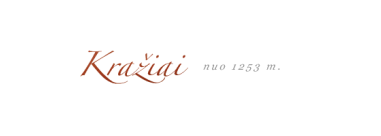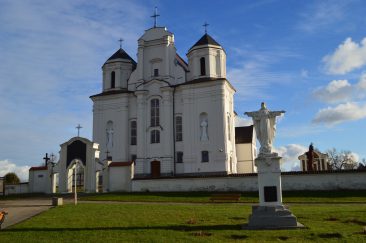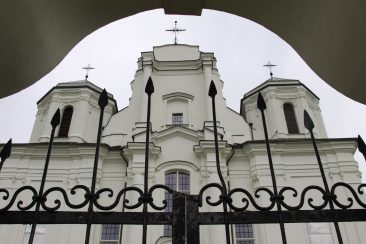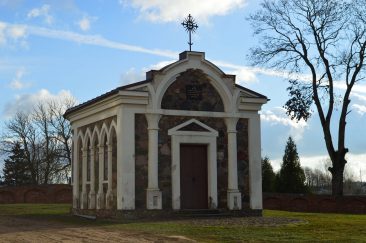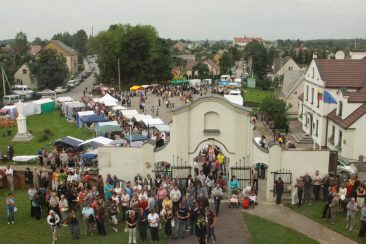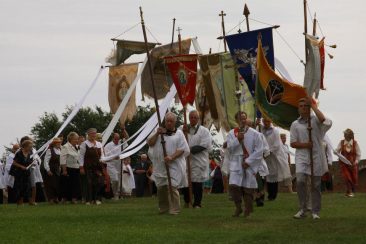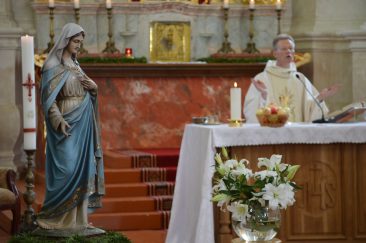THE BENEDICTINE CONVENT AND KRAZIAI CHURCH
The Benedictine Convent in Kraziai was funded by Chrizostomas Valatkevičius (Chryzostom Wolodkiewicz) in 1639. Between 1640 and 1641 he built a wooden convent together with the church. Benedictine nuns settled there in 1642. Between 1757 and 1763 a stone church of the late Baroque style was built by the nuns. The architect of this project was the Jesuit architect Tomas Žebrauskas (Thomas Zebrowski). In the 19th century the church had five altars. In 1803, 22 nuns lived in the convent, and in 1840, 18 nuns stayed there.
In 1891, the rule of the Czar ordered the elimination of the Kraziai Benedictine Convent. Only in the spring of 1893 were the last infirm nuns forcibly taken to Kaunas. The local Catholics asked that the former church of the convent be left to the parish, but the Czar‘s order was to knock the church down. Local people joined force in order to defend the temple. In 1893 on the 10th of October, Cossacks from Varniai arrived under the guidance of the Kaunas governor Nikolajus Klingerbergas (Nicolai Klingerberg) and the slaughter of the protectors of Kraziai Church took place. The temple was desecrated, devastated and closed. Because of the outrage that sprung up not only in Lithuania, but also abroad, the government did not destroy the church and in 1908 it was given back to the parish. In 1910 it was renovated and sanctified as a parochial church. Its gable and towers were damaged and a fire was started inside the church during the war in 1943. During the postwar years it was repaired on a few occassions. Between 2000 and 2006 the painting of the main altar „The Assumption of the Blessed Virgin Mary“ was restored, which was first mentioned in the visitation of 1677.
The burial chapel of St. Rokas is located in the churchyard of the former Benedictine Church. This chapel, together with the Church, has been announced as a cultural monument.
A stone church of the late Baroque style, the churchyard fence, and the chapel of St. Rokas has remained to this day.
From the 18th century St. Rokas feast has become the biggest festival of the parish and nowadays it brings crowds to annual celebrations.
